Supertest: Soviet Tier VIII Cruiser Tallinn
7 min readLadies and Gentlemen, it turns out that I was right to wait for the balance changes for test ships. The Soviet heavy cruisers all received a nerf to their radar duration but also a concealment nerf for Tallinn and Riga.
When it comes to Tallinn, she was initially called Lützow, a German cruiser of the Admiral Hipper-class. The ship was purchased by the Soviet Union in February 1940 and was renamed Petropavlovsk in September 1940.

At the moment of her transfer, the ship was not yet completed and only had half of her 8 203 mm guns installed (a twin turret at the front and one at the rear). Due to poor cooperation between the Germans and the Soviets, by the time of Operation Barbarossa, the ship was nowhere near finished but she still took part in the defense of Leningrad.
In September 1941, she was heavily damaged by German artillery and was later sunk in April 1942. She was then refloated in September of the same year and after repairs, she was used in 1944 during the counter-offensive to free Leningrad. It’s also at that point that she received her name “Tallinn”.
Tallinn was used as a floating barrack after the war and in 1953, was renamed again to Dniepr. She was scrapped at some point between this year and 1960.
In World of Warships, the Tallinn is as she would have been completed after the war, following the plans of the Project 83.
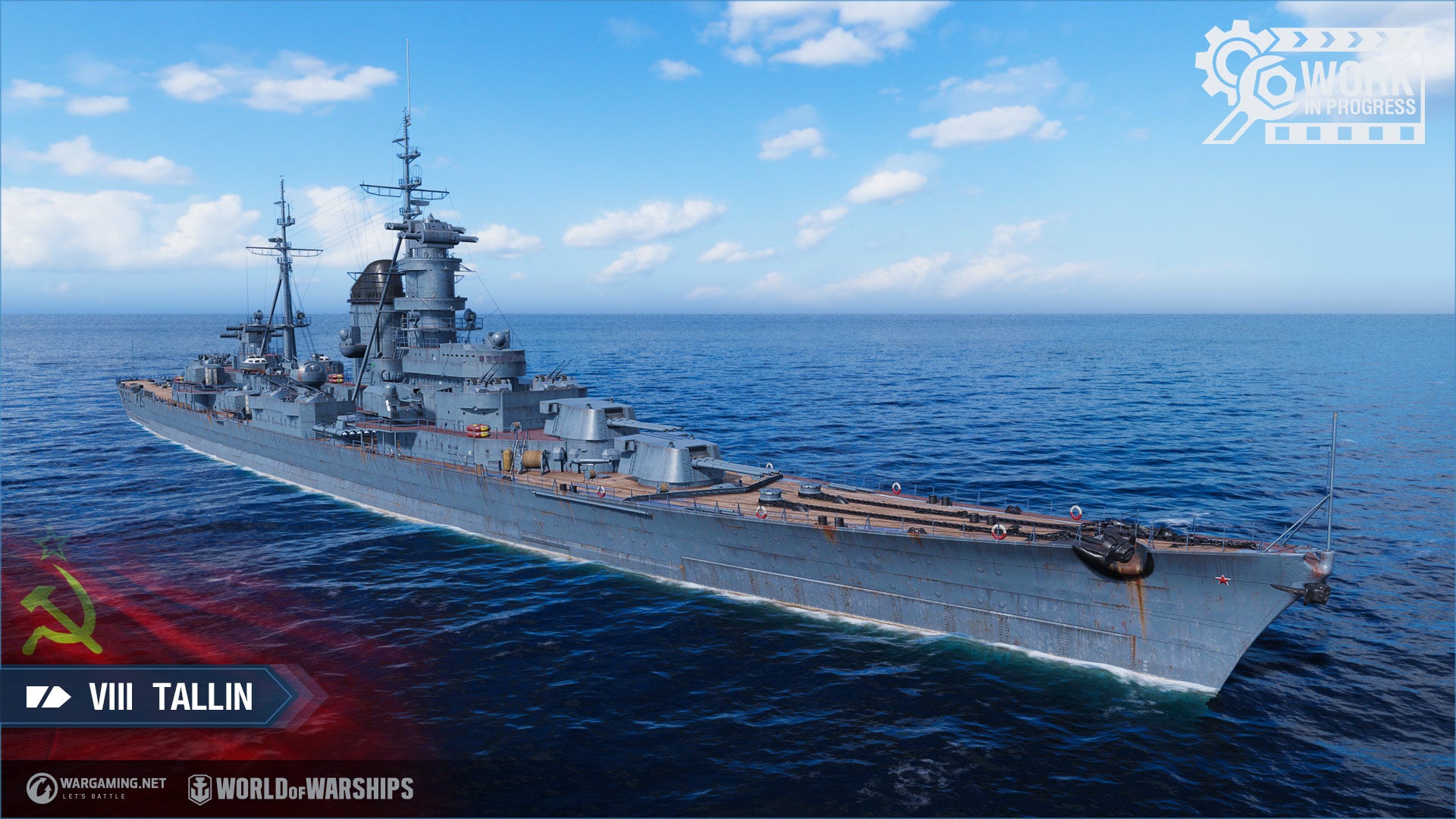
Features of the Soviet heavy cruisers:
Effective armor-piercing shells: They have high armor penetration for cruisers, good ballistics, and a short fuse arming time (0.022 seconds), which lowers the number of overpenetrations. These shells also have improved ricochet angles: it is possible starting from 55 degrees and guaranteed from 65 degrees;
These strengths are offset with an average reload time and special accuracy settings: at long ranges, the dispersion ellipse of the new sub-branch ships is bigger than that of other cruisers;
A combination of their accuracy settings and a Surveillance Radar consumable with a 12 km range makes the new cruisers most effective at medium ranges.
Hull | Engine | Gun Fire Control System | Main battery | Torpedoes |
Tallinn (A) |
Propulsion: 132 000 hp |
GFCS VIII mod. 1 |
180 mm/57 MK-3-180 |
53-38U |
Tallinn (B) |
GFCS VIII mod. 2 |
As usual, I will cover the stats of the stock and fully upgraded versions of the ship.
Stock ship
| Tier | VIII |
| Health | 39 000 HP |
| Displacement | 15 281 tons |
| Main Armament | |
| Maximum Firing Range | 16.060 km |
| 180 mm/57 MK-3-180 | 4 x 3 180 mm |
| Secondary Armament | |
| Maximum Firing Range | 5.000 km |
| 100 mm/70 SM-5-1s | 6 x 2 100 mm |
| Torpedo Armament | |
| Maximum Firing Range | 4.000 km |
| 533 mm Quintuple PTA-53-68-bis | 2 x 5 533 mm |
| Maximum speed | 33.1 kts |
| Turning Circle Radius | 900 m |
| Rudder Shift Time | 15.3 s |
| Surface Detectability | 14.04 km |
| Air Detectability | 7.49 km |
| Detectability After Firing Main Guns in Smoke | 6.44 km |
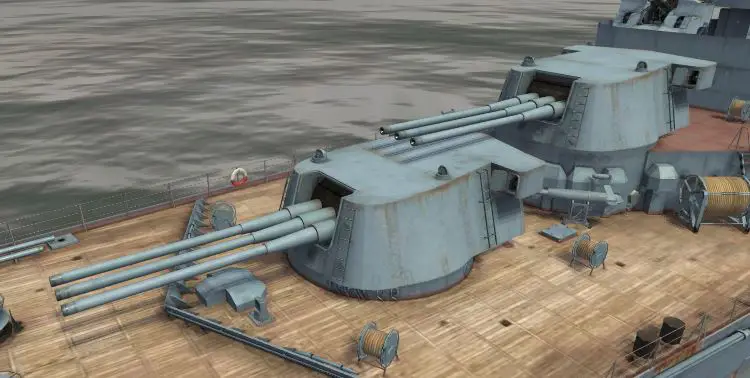
| 4 x 3 180 mm/57 MK-3-180 | |
| Maximum Firing Range | 16.060 km |
| Reloading Time | 13.5 s |
| 180 Degree Turn Time | 22.5 s |
| Optimal firing angles at the front | 37° |
| Optimal firing angles at the rear | 37° |
| Sigma | 2.00 sigma |
| Maximum Dispersion | 176 m |
| Shells | |
| Type of Projectile | HE – HE-33 |
| Alpha Damage | 2 500 HP |
| Damage | 890 HP |
| Penetration capacity | 30 mm |
| Explosion size | 0.7 |
| Fire chance | 11 % |
| Projectile Speed | 920 m/s |
| Air Drag | 0.265 |
| Projectile Mass | 109.2 |
| Type of Projectile | AP – AP-33 |
| Alpha Damage | 4 550 HP |
| Chance to Cause Fire | -0.5 % |
| Projectile Speed | 920 m/s |
| Air Drag | 0.278 |
| Projectile Mass | 109.2 |
| Projectile Krupp | 2 370 |
| Projectile Detonator | 0.022 s |
| Detonator threshold | 30 mm |
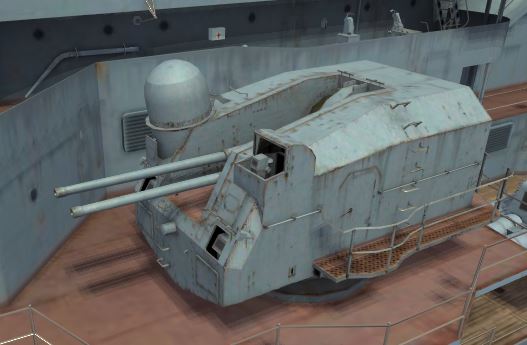
| 6 x 2 100 mm/70 SM-5-1s | |
| Maximum Firing Range | 5.000 km |
| Reloading Time | 4.0 s |
| Sigma | 1.00 sigma |
| Shells | |
| Type of Projectile | HE – HE-55 |
| Alpha Damage | 1 400 HP |
| Damage | 310 HP |
| HE penetration | 17 mm |
| Explosion Size | 0.29 |
| Chance to Cause Fire | 6 % |
| Projectile Speed | 1 000 m/s |
| Air Drag | 0.295 |
| Projectile Mass | 15.6 |
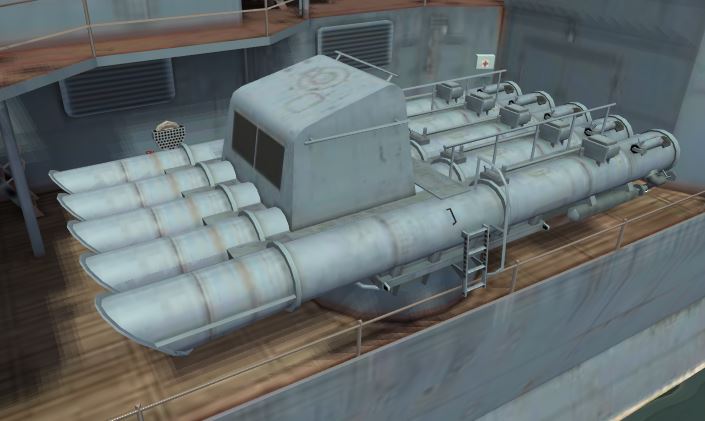
| 2 x 5 533 mm Quintuple PTA-53-68-bis 53-38U | |
| Reloading Time | 131 s |
| Maximum Distance | 4.0 km |
| Optimal firing angles at the front | 33° |
| Optimal firing angles at the rear | 39° |
| Damage | 17 933 |
| Flooding Chance | 302 % |
| Speed | 65 kt |
| Surface Detectability | 1.3 km |
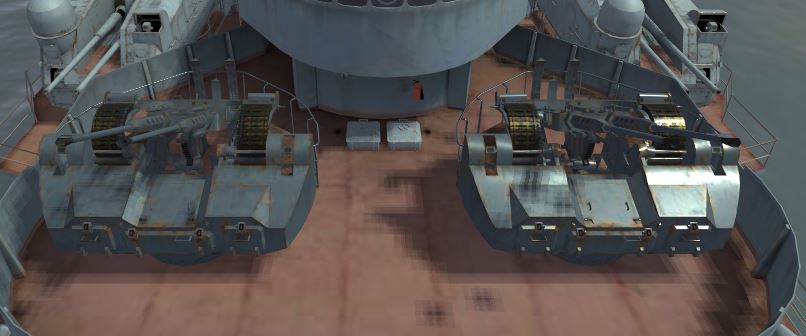
| 6 x 2 100 mm/70 SM-5-1s | |
| Sector range | 0.1 km – 5.8 km |
| Hit chance | 90 % |
| Sector’s damage | 42 |
| Sector’s damage frequency | 0.29 s |
| Sector’s damage per second | 147 |
| Flak clouds number | 6 |
| Flak cloud damage | 1400 |
| 8 x 2 45 mm CM-16 | |
| Sector range | 0.1 km – 3.5 km |
| Hit chance | 90 % |
| Sector’s damage | 47 |
| Sector’s damage frequency | 0.29 s |
| Sector’s damage per second | 165 |
Slot 1 | Slot 2 | Slot 3 |
Damage Control Party I Work time: 5 s Cooldown: 90 s | Defensive AA Fire I Number of charges: 2 Work time: 40 s Cooldown: 120 s Continuous DPS: +50% DPS from flak clouds: +300% | Surveillance Radar I Number of charges: 2 Work time: 10 s Cooldown: 180 s Ship spotting distance: 12.0 km |
Damage Control Party II Work time: 5 s Cooldown: 60 s | Defensive AA Fire II Number of charges: 3 Work time: 40 s Cooldown: 80 s Continuous DPS: +50% DPS from flak clouds: +300% | Surveillance Radar II Number of charges: 3 Work time: 10 s Cooldown: 120 s Ship spotting distance: 12.0 km |
Hydroacoustic Search I Number of charges: 2 Work time: 100 s Cooldown: 180 s Ship spotting distance: 5.0 km Torpedo spotting distance: 3.5 km | ||
Hydroacoustic Search II Number of charges: 3 Work time: 100 s Cooldown: 120 s Ship spotting distance: 5.0 km Torpedo spotting distance: 3.5 km |
Fully upgraded ship
| Tier | VIII |
| Health | 45 000 HP |
| Displacement | 18 981 tons |
| Main Armament | |
| Maximum Firing Range | 17.666 km |
| 180 mm/57 MK-3-180 | 4 x 3 180 mm |
| Secondary Armament | |
| Maximum Firing Range | 5.000 km |
| 100 mm/70 SM-5-1s | 6 x 2 100 mm |
| Torpedo Armament | |
| Maximum Firing Range | 4.000 km |
| 533 mm Quintuple PTA-53-68-bis | 2 x 5 533 mm |
| Maximum speed | 33.1 kts |
| Turning Circle Radius | 900 m |
| Rudder Shift Time | 10.9 s |
| Surface Detectability | 14.04 km |
| Air Detectability | 7.49 km |
| Detectability After Firing Main Guns in Smoke | 6.44 km |

| 4 x 3 180 mm/57 MK-3-180 | |
| Maximum Firing Range | 17.666 km |
| Reloading Time | 13.5 s |
| 180 Degree Turn Time | 22.5 s |
| Optimal firing angles at the front | 37° |
| Optimal firing angles at the rear | 37° |
| Sigma | 2.00 sigma |
| Maximum Dispersion | 190 m |
| Shells | |
| Type of Projectile | HE – HE-33 |
| Alpha Damage | 2 500 HP |
| Damage | 890 HP |
| Penetration capacity | 30 mm |
| Explosion size | 0.7 |
| Fire chance | 11 % |
| Projectile Speed | 920 m/s |
| Air Drag | 0.265 |
| Projectile Mass | 109.2 |
| Type of Projectile | AP – AP-33 |
| Alpha Damage | 4 550 HP |
| Chance to Cause Fire | -0.5 % |
| Projectile Speed | 920 m/s |
| Air Drag | 0.278 |
| Projectile Mass | 109.2 |
| Projectile Krupp | 2 370 |
| Projectile Detonator | 0.022 s |
| Detonator threshold | 30 mm |

| 6 x 2 100 mm/70 SM-5-1s | |
| Maximum Firing Range | 5.000 km |
| Reloading Time | 4.0 s |
| Sigma | 1.00 sigma |
| Shells | |
| Type of Projectile | HE – HE-55 |
| Alpha Damage | 1 400 HP |
| Damage | 310 HP |
| HE penetration | 17 mm |
| Explosion Size | 0.29 |
| Chance to Cause Fire | 6 % |
| Projectile Speed | 1 000 m/s |
| Air Drag | 0.295 |
| Projectile Mass | 15.6 |

| 2 x 5 533 mm Quintuple PTA-53-68-bis 53-38U | |
| Reloading Time | 131 s |
| Maximum Distance | 4.0 km |
| Optimal firing angles at the front | 33° |
| Optimal firing angles at the rear | 39° |
| Damage | 17 933 |
| Flooding Chance | 302 % |
| Speed | 65 kt |
| Surface Detectability | 1.3 km |
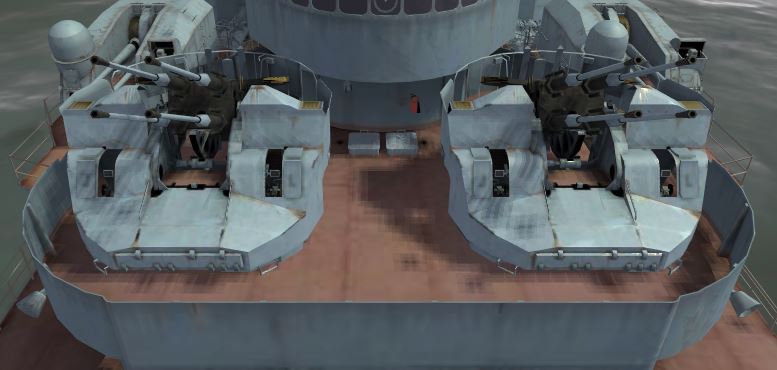
| 6 x 2 100 mm/70 SM-5-1s | |
| Sector range | 0.1 km – 5.8 km |
| Hit chance | 90 % |
| Sector’s damage | 42 |
| Sector’s damage frequency | 0.29 s |
| Sector’s damage per second | 147 |
| Flak clouds number | 6 |
| Flak cloud damage | 1400 |
| 8 x 4 45 mm SM-20-ZIF | |
| Sector range | 0.1 km – 3.5 km |
| Hit chance | 90 % |
| Sector’s damage | 82 |
| Sector’s damage frequency | 0.29 s |
| Sector’s damage per second | 287 |
Slot 1 | Slot 2 | Slot 3 |
Damage Control Party I Work time: 5 s Cooldown: 90 s | Defensive AA Fire I Number of charges: 2 Work time: 40 s Cooldown: 120 s Continuous DPS: +50% DPS from flak clouds: +300% | Surveillance Radar I Number of charges: 2 Work time: 10 s Cooldown: 180 s Ship spotting distance: 12.0 km |
Damage Control Party II Work time: 5 s Cooldown: 60 s | Defensive AA Fire II Number of charges: 3 Work time: 40 s Cooldown: 80 s Continuous DPS: +50% DPS from flak clouds: +300% | Surveillance Radar II Number of charges: 3 Work time: 10 s Cooldown: 120 s Ship spotting distance: 12.0 km |
Hydroacoustic Search I Number of charges: 2 Work time: 100 s Cooldown: 180 s Ship spotting distance: 5.0 km Torpedo spotting distance: 3.5 km | ||
Hydroacoustic Search II Number of charges: 3 Work time: 100 s Cooldown: 120 s Ship spotting distance: 5.0 km Torpedo spotting distance: 3.5 km |
The armor

Compared to her German big sisters, the Tallinn presents a worse armor protection, losing the 27 mm plating on the bow, the stern and the sides. She basically has the same armor as the Mainz except for the turrets.
The bow section
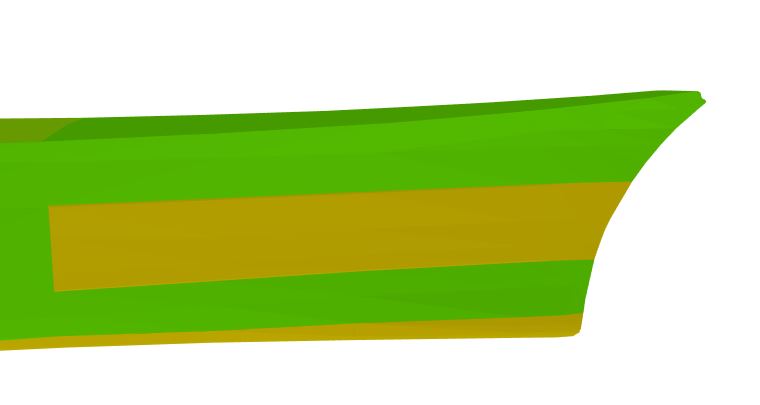
The bow is 25 mm thick except for an extended belt of 40 mm that reaches the tip of the bow like on the Mainz.
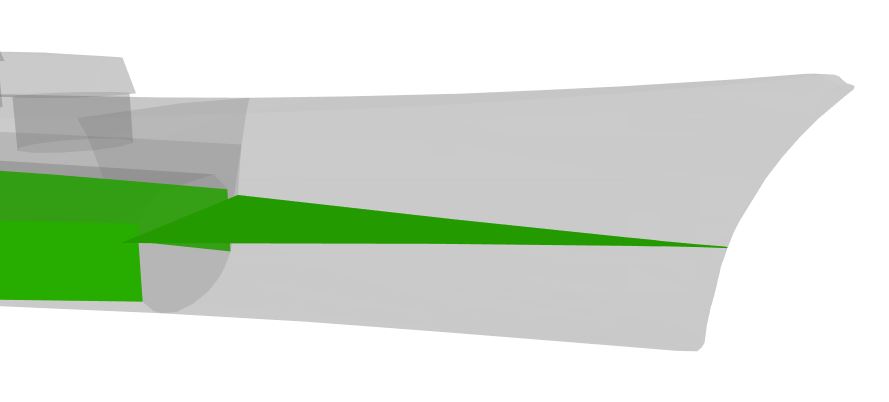
Inside the bow, there is a 20 mm armored deck but it’s basically a decoration due to its position and its thickness. Anything that already overmatched the bow of the ship will overmatch it as well.
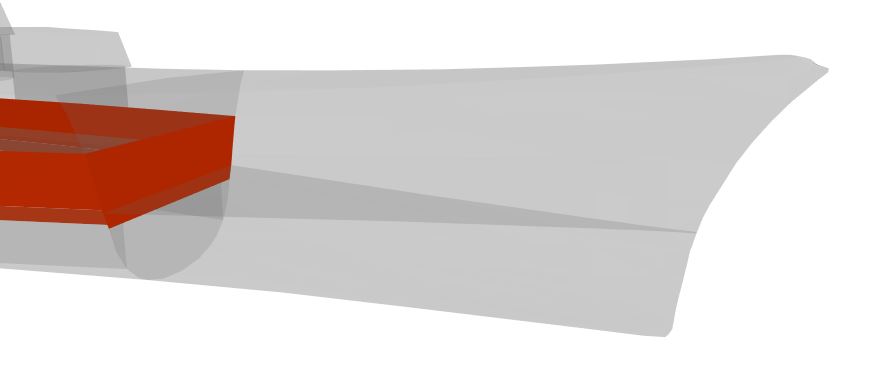
For the protection of the middle section, except for the 80 mm thick upper part of the citadel athwartship and a small part of the casemate above it, the rest is 25 mm thick. Sadly, I can’t show it here since with the rest of the bow also being 25 mm, you basically see nothing.
The middle section



The deck of the Tallinn is, following the IFHE and plating rework 27 mm thick. The sides, on the other hand, are only 25 mm thick and the main belt, behind the torpedo bulge is 80 mm thick. Finally, behind the turtleback, the citadel side armor is only 20 mm thick.
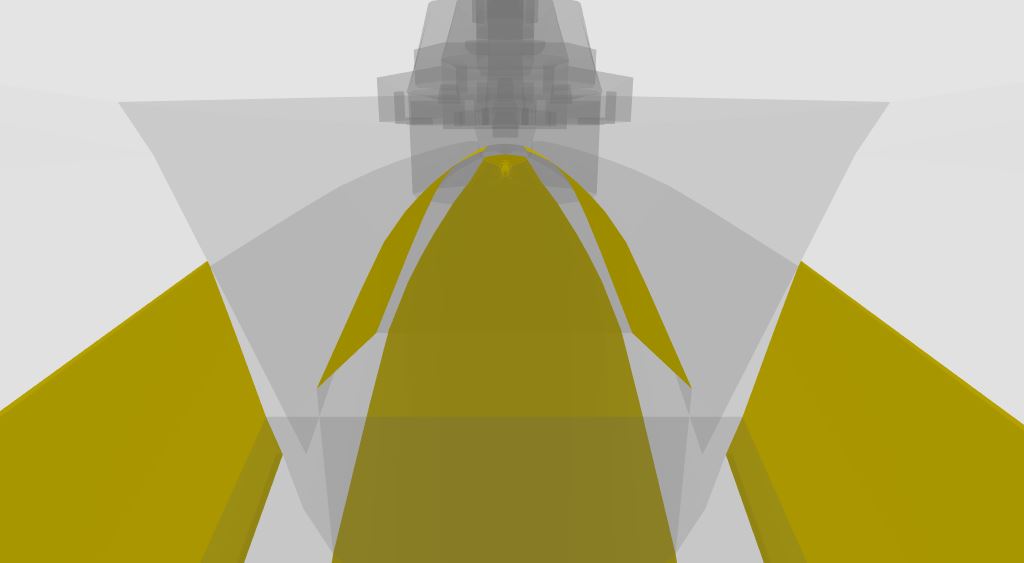
For the turtleback, it is 40 mm thick. The weird thing is that on the armor viewer, it doesn’t link with the main belt but it’s possibly a simple mistake.

The vertical protection is… laughably bad with the citadel deck only being 30 mm thick. It continues inside the stern to form an armored deck in that section.
The stern section
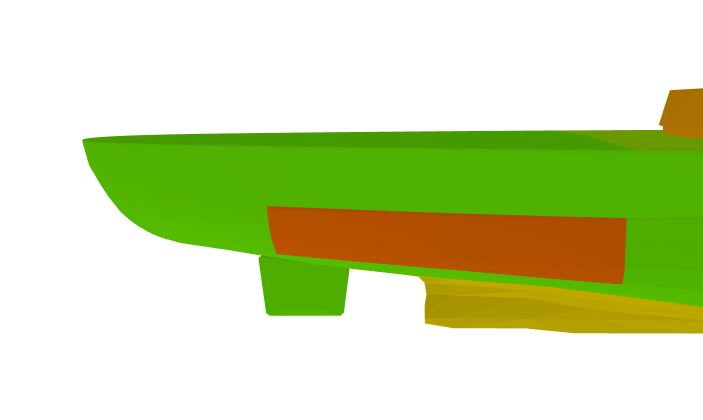
For the stern, it’s 25 mm thick except for a 70 mm thick extended belt around the steering gears.
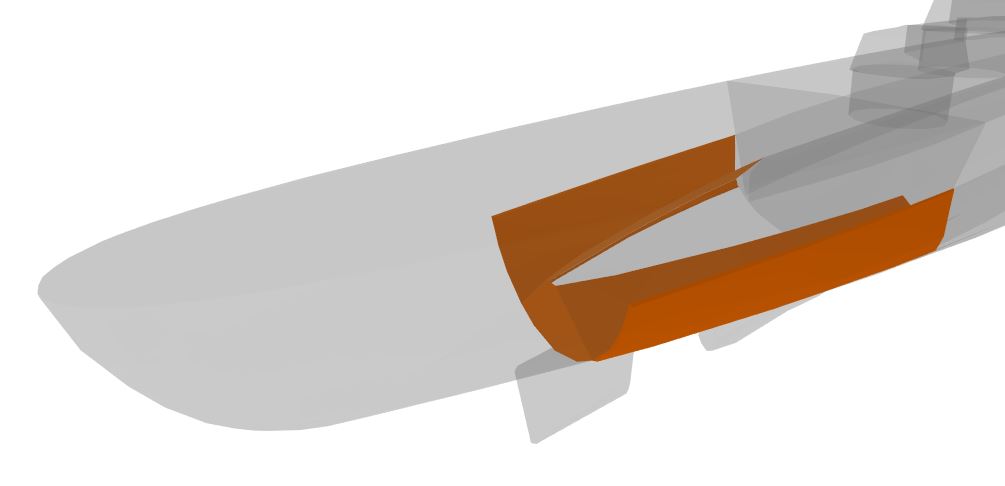
Inside the bow, there are 2 plates of 70 mm on either side of the 30 mm armored deck.
The superstructure

Compared to the rest of the Admiral Hipper-class, the Tallinn has a much more compact superstructure with, for example, the lack of any plane operating facility. It is 13 mm thick except for the conning tower that is 150 mm thick.
The turrets

The turrets are entirely covered by 50 mm of armor sooo… yeah they are quite vulnerable. It’s not IJN level of turret protection but it’s not much better.
Personal opinion
Right now, the Tallinn seems like a weird introduction to the heavy cruiser sub-line. Compared to the Riga and Petropavlovsk, her armor is seriously lacking and you will be jumping from 180 mm guns that will require IFHE to 220 mm guns that won’t need it.
I also question the point of the radar on these ships now since it only lasts 12 seconds at best with the upgrade which means that unless Adrenaline rush kicks in, the ship will get one salvo at best and same for the rest of the team.



















Here’s the dispersion formula of Soviet CA (PTS0.9.2)
Tallinn: 8.9x+33
Riga & Petro: 8.5x+15
Nomal Cruiser: 6.9x+33
Ho hoooo… Well thank you very much good sir!